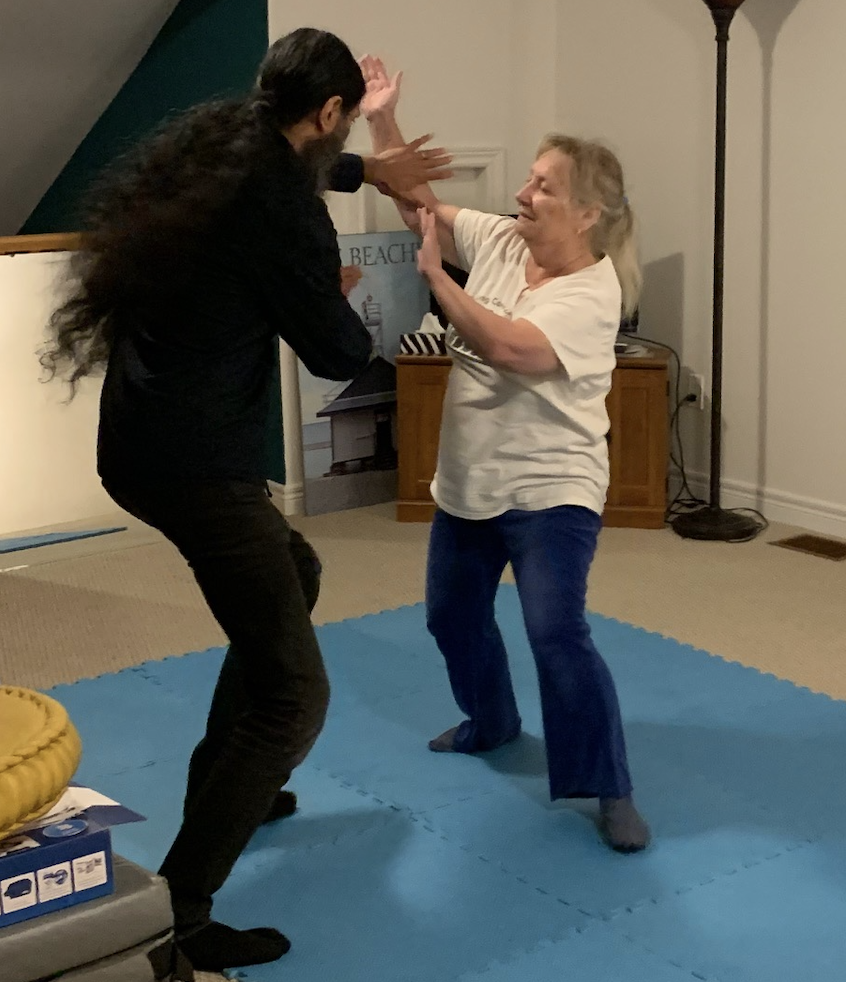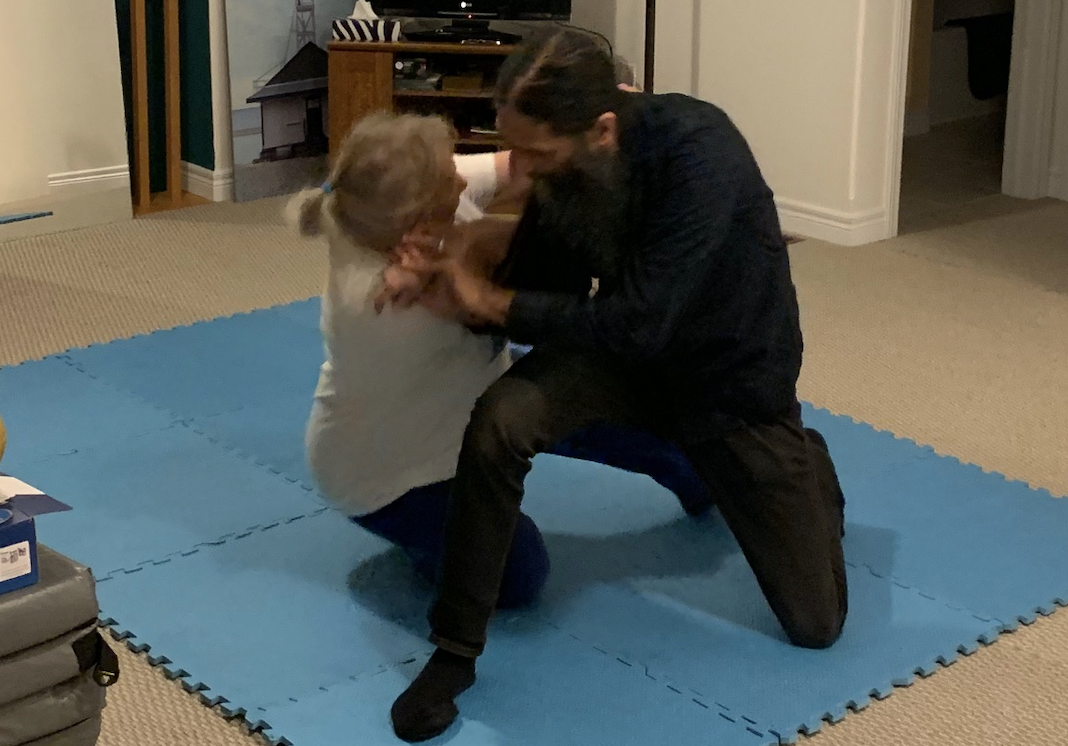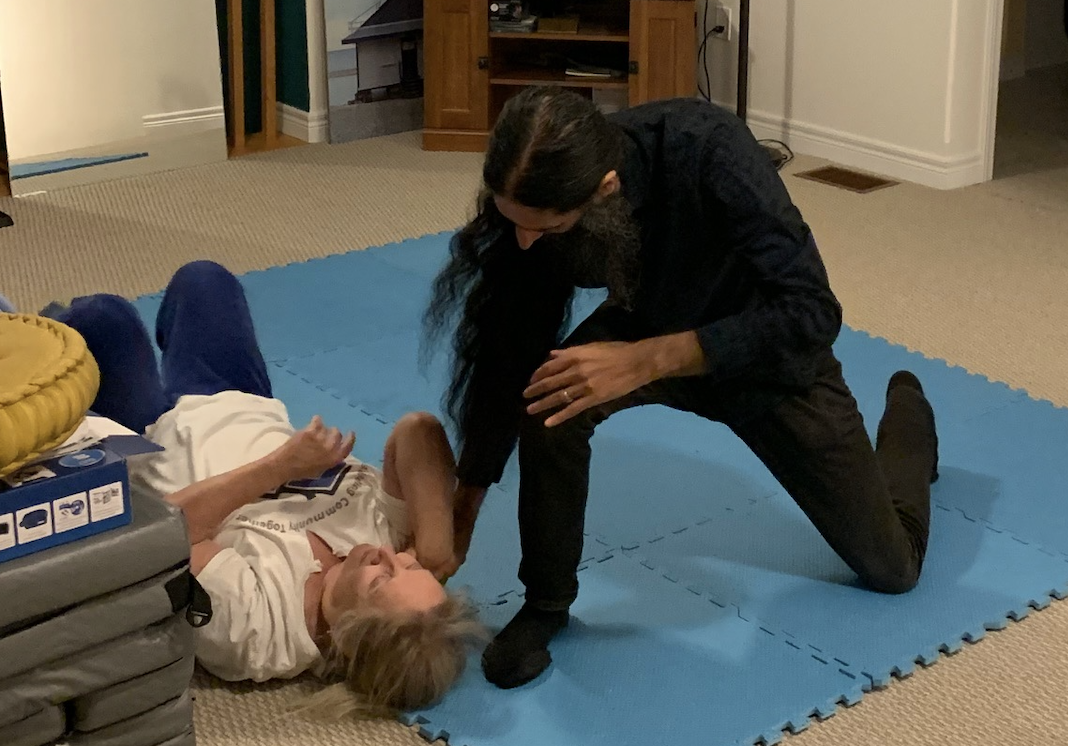Winter is coming
Next information session
If you haven’t been to one of our information sessions before, why not join us for our next one on December 6th at 6pm?
We’ve chosen our architect!
We’re excited to share that KCC has chosen Coolearth Architecture to take us through our detailed design process and on to construction. This visionary firm shares our values of sustainability and living lightly on the Earth, and they specialize in integrating Passive House and Permaculture Design into their buildings. We’re incredibly excited to be taking a holistic approach to designing our home and outdoor space.
You can read all about the amazing team who will be designing for us at https://www.coolearth.ca/team/
Dinner and a fight
Contributed by Sunil
Pati recently invited Therese and me over for dinner, and we had a very pleasant evening of leisurely conversation and delicious food. But one topic led to another, and before I knew it, I was grappling with my hostess on the floor while Therese cowered in a corner trying not to get hurt.
Let me explain. Pati and I are both practitioners of Aikido. It’s a martial art that focuses on self-defence using the least force required to resolve the situation. The name is literally translated as “the way of unifying energy” and speaks to how it goes beyond physical techniques, emphasizing harmony in the attempt to avoid physical aggression and blending with the attacker’s movements to control them using the minimum force required. Instead of trying to hit or kick your assailant into submission, you attempt to redirect their attack to either restrain them in some kind of joint lock, or throw them so you have a chance to get away without either of you getting hurt too badly.
I first came across it back in the UK, in 2005 and I was immediately hooked.
The thing that drew me to AIkido is that it’s a powerful self-defence practice that doesn’t promote aggression. This approach aligns with my belief in resolving conflicts peacefully. I hope I never need it, but it’s good to know that I have the means to diffuse a confrontation - or at least try to - without making myself vulnerable. Unless someone really wants a fight, a painful joint lock or finding themselves inexplicably on the floor usually changes their mind.
Aikido uses flowing and circular movements that produce mental and bodily awareness through a deep connection between physical actions and mental focus. In that sense, it’s almost like ballet.
It teaches you to be present in the moment, feeling both your own and your attackers movements. In essence, you blend with the attacker’s motion, redirecting their energy and movement - the harder they come at you, the harder they fall, but it’s their force that is being used against them. I can attest to being thrown around the dojo like a rag doll by a 4 foot tall 10 year old during training sessions. Although I haven’t attended a class in years, I still benefit from an awareness of my body, improved balance, and a more profound understanding of the mind-body connection.
Because practicing Aikido involves being thrown around, learning how to fall and roll safely is a key part of the training and this is becoming more and more useful and important as I get older. Other benefits for oldies like me include developing a great sense of balance and coordination, and the relatively gentle exercise and stretching you get when training.
Aikido practitioners form a global community that transcends cultural and linguistic boundaries. Back in the UK, the Aikido community was a diverse and supportive group of individuals, with an amazing degree of kindness that I hadn’t expected. Pati tells me she’s had the same experience here in Canada. She’s taking me along to her dojo next week, to observe a grading (testing for first black belt). I feel myself being slowly drawn back into the Aikido world, and I’m very happy about that.
Aikido isn’t just a set of techniques; it’s a way of life, and an art of continuous learning. Its central philosophy revolves around harmony and the resolution of conflict. This philosophy extends beyond the dojo into everyday life, fostering a mindset of cooperation and peaceful resolution.
And there’s nothing better for your digestion than rolling around on a mat with a friend.
Nonviolent Communication training - a personal reflection
Submitted by Therese
Several members of KCC recently participated in a Nonviolent Communication (NVC) training workshop. It was run by Aukje, who is a certified NVC trainer, during our October Superweekend. It turned out to be the highlight of the weekend for many of us, and I had several personal takeaways which have already been helpful to me in my interactions with others.
The core of the workshop was an exploration of NVC’s basic principles: observation, feelings, needs, and requests. We did a number of exercises to help us to distinguish observations from snap judgments. For me, this was really useful as it showed me how to bring clarity to my communication and avoid using loaded language.
Understanding Feelings
One of the profound aspects of the training was the emphasis on identifying and expressing feelings. Personally, I’ve always struggled with this. In fact, a coach of mine once gave me homework in the shape of a list of “feeling” words, each of which I had to use in a sentence before we met again. I’m not sure why I’ve been so disconnected from my feelings - I’m sure there’s enough for a whole psychologists’ conference locked in my head. In any case, it seems I’m not unusual, and with Aukje’s help, we all gained a deeper awareness of our own emotions and learned to recognize the feelings underlying our words.
Hand-in-hand with feelings go needs. We did some revealing exercises that showed us how our needs give rise to our feelings. It seems obvious, but until now, I’ve never paused to really reflect on what that means. It marked a shift in perspective from blame and criticism to empathy and understanding for myself as well as for others.
The Power of Requests
Nonviolent Communication encourages us to make clear, actionable requests rather than demands. We did a wonderful “roadmap” exercise in which we drew on difficult situations in our own lives, and made statements of our observations, feelings, and needs, to help us to formulate requests that were specific, positive, and considerate of the other person's needs. It showed us how asking for what we want can be collaborative rather than confrontational.
Training like this can be hard, and sharing personal challenges requires courage. But KCC is already a strong, supportive community, and we care deeply about each other. We know from experience that breaking old communication patterns is a lifelong activity, and that the reward of stronger connections outweighs any discomfort we might feel along the way. Aukje’s training showed us how to ask for what we want, in a way that deepened our connection with each other. I believe this is essential training for any cohousing community.
On a personal level, the biggest gain for me was in self-awareness. I know I’ve only dipped my toes in the water, so to speak, but I feel that I now have a valuable toolkit for fostering authentic connections and resolving conflicts. I’ve found that I’ve really internalized this experience, and I’m looking forward to learning more.
The geology of the Kawarthas
Nestled within the heart of Ontario, the Kawarthas region unveils a geological tapestry that tells the ancient story of our planet's ever-evolving landscape. We love this fascinating article by local journalist Drew Monkman. Peterborough really is an amazing place to discover!
Monkman: Peterborough county ‘sitting on the edge’
You can find all of Drew’s previous columns on his website at www.drewmonkman.com/.
And finally… some words from Maya Angelou
“The ache for home lives in all of us. The safe place where we can go as we are and not be questioned.”
―Maya Angelou, All God's Children Need Traveling Shoes






